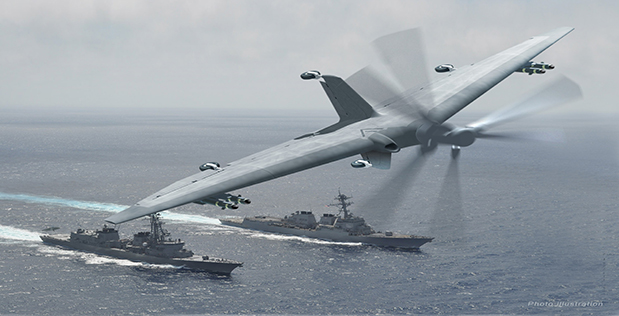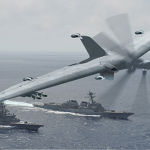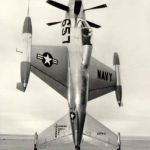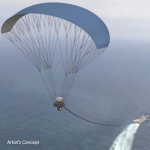Technology Lab / Information Technology
http://arstechnica.com/
TERN "flying wing" would launch and land vertically on smaller ships' flight deck.
A DARPA artist's rendering of the Northrop Grumman concept
for TERN, a "tail-sitter" drone that takes off and lands vertically on
smaller ships' flight decks. It could fill a major gap in the
capabilities of the Littoral Combat Ship.
But now those 1950s "tail-sitters" are looking more like they're back to the future. The Defense Advanced Research Projects Agency has asked Northrop Grumman to move forward with development of a drone that uses a similar approach to flying, intended to give smaller surface ships a stealthy, larger drone with capabilities on par with those currently flown by the Army and Air Force. Called the TERN (for "Tactically Exploited Reconnaissance Node"), the program is jointly funded by DARPA and the Office of Naval Research.
Northrop Grumman was one of two competitors involved in the TERN program, which up to this point has been largely conceptual. The Northrop Grumman design, like the Pogo and Salmon of the 1950s, uses coaxial, counter-rotating propellers to achieve vertical flight. But its body more closely resembles Northrop Grumman's other Naval drone prototype, the X-47B carrier drone.
In a statement released by DARPA, TERN Program Manager Dan Patt said, "The design we have in mind for the Tern demonstrator could greatly increase the effectiveness of any host ship by augmenting awareness, reach, and connectivity. We continue to make progress toward our goal to develop breakthrough technologies that would enable persistent ISR and strike capabilities almost anywhere in the world at a fraction of current deployment costs, time and effort.”
In English, that means that DARPA is counting on the more substantial flying-wing design to be more in the class of the Army's RQ-9 Reaper or MQ-1C Grey Eagle (the Army's upgraded version of the MQ-1 Predator). A flying-wing TERN could carry Hellfire missiles, bombs, and other kinetically destructive packages to deploy against all manners of targets, launched stealthily from the deck of an inconspicuous Littoral Combat Ship (LCS) or destroyer well off the coast.
Such a drone would at least partially fill the holes in the LCS' never-realized role in providing fire support for Marines ashore with the canceled NLOS missile system. The deputy program manager for TERN, Gil Graff of the Office of Naval Research, said in a DARPA-published statement, "If successful, TERN could open up exciting future capabilities for Navy small-deck surface combatants and U.S. Marine Corps air expeditionary operations.” And by "exciting," Graff probably meant "actually can blow things up." By comparison, the current drone deployed on LCS ships, Northrop Grumman's MQ-8 Fire Scout—a helicopter drone that was a survivor of the Army's Future Combat Systems program—is mostly good for looking at things.
Northrop was selected over drone manufacturer AeroVironment, the other contender in the most recently completed, mostly conceptual phase of TERN. While details of AeroVironment's concept haven't been released, it's widely believed that the company was behind the "sidearm" approach for recovery being forwarded early in TERN's development—a mechanical arm that reaches out over the side of the ship to capture the drone as it returns. Another proposed deployment and recovery method created by the Maritime Applied Physics Corporation—using a towed parafoil "docking station" to capture and reel in the drone—has turned into a separate program entirely, called TALONS (Towed Airborne Lift of Naval Systems). Instead of acting as a drone snagger, TALONS could be used to give smaller ships and even patrol boats an over-the-horizon visual and radar sensor platform—putting up to 200 pounds of sensors as high as 1,000 feet in the air.






No comments:
Post a Comment